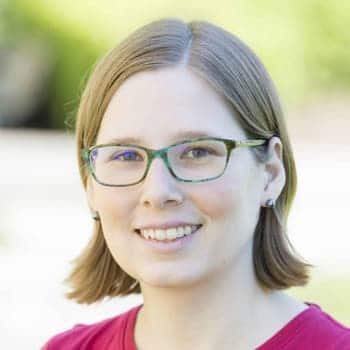Separation anxiety doesn’t just affect children. Statistics reveal that adults and teenagers may have the disorder too, especially if they have other mental health conditions.
When a child is young, it’s natural for them to become alarmed, frightened or upset when they lose sight of their parents. Separation anxiety is a natural response in babies and toddlers up to around age 3. Normally, this behavior fades over time, but in rare cases, older children and even teens and adults can experience it. When being apart from someone close causes enough stress to interfere with daily life, it may be classified asseparation anxiety disorder.
Originally considered a childhood disorder, we now know that separation anxiety can affect people at any age. People who have it become extremely distressed when they have to leave the company of someone they have a strong emotional attachment to. They often spend excessive amounts of time worrying about the possibility of being alone or abandoned.
Separation anxiety disorder is still not fully understood. However, the latestfacts and statistics about separation anxiety disorderreveal who grapples with it and what available treatment options are most effective.
Prevalence of Separation Anxiety
Theprevalence of separation anxiety disordermay be significantly higher than originally thought. Only recently hasseparation anxietybeen considered a disorder in its own right, rather than a symptom of another condition. Also, doctors used to think only children could have the condition, but now recognize that it can also affect adolescents and adults.
Ready to Break Free From Addiction?
If you’re seeking help for yourself or a loved one, our expert team is here to guide you every step of the way. Don’t wait—start your journey to recovery today.
The prevalence of separation anxiety varies by age group, being most common in children. It affects males and females equally.
Separation Anxiety in Children
Though most children outgrowseparation anxiety as toddlers,separation anxiety is still considered a normal trait in children up to the age of 6. Children 7 years old or older who show signs of being distressed when apart from their caregivers may be diagnosed with separation anxiety.
Separation anxiety is the most common type ofanxiety disorderin children. It accounts forhalfof all referrals for mental health treatment for anxiety in children. Approximately4%ofchildrenages 7–11 have the disorder. It affects girls and boys at the same rate. Between50–75%of children with separation anxiety come from homes with a low socioeconomic status.
Children with the disorder often cling to their parents, caregivers or siblings, refusing to leave their side. They may show physical signs of anxiety such as headaches, upset stomach and trouble focusing in school. About75%of them refuse to attend school.
Separation Anxiety in Adolescents
Separation anxietyis much less common in teenagers than in younger children. About1.6 %ofadolescentshave the disorder. It’s more common among youngerteens; separation anxiety occurs in about3.9%of adolescents aged 12–14 and only in about1.3%of those aged 14–16.
Separation Anxiety in Adults
Separation anxietyis not as well studiedin adultsas in children. Since its recognition as an adult disorder, estimates of the prevalence of separation anxiety have varied. Some studies have estimated that about0.9–1.9%of adults have a separation anxiety disorder, while others estimate that it impacts around6.6%of adults. Separation anxiety disorder is more common among people who have experienced a traumatic event.
Sometimes parents, especiallynew mothers, develop separation anxiety around their children, particularly in cases where the mother experiences a stressful pregnancy.
Separation Anxiety and Co-Occurring Disorders
Separation anxiety often co-occurs with othermental health disorders. In particular, children with a separation anxiety disorder are at a higher risk for developing other anxiety or depressive disorders later in life. Around60%of children with separation anxiety also have another anxiety disorder while30%have two or more others, andone-thirdalso have depression.
Conditions which commonly co-occur with separation anxiety disorder include:
- Depression
- Panic disorder
- Agoraphobia
- Post-traumatic stress disorder
- Asperger’sorautism spectrum disorder
- Attention-deficit hyperactivity disorder
- Substance use disorders
Separation Anxiety Treatment and Outlook
In mild cases, no medicaltreatment is needed for separation anxiety disorder. However, doctors may still recommend some counseling to anyone with a separation anxietydiagnosis. Counseling can be helpful to reduce feelings of anxiety.
Usually, treatment involves psychotherapy, or “talk therapy” sessions with a trained psychologist or psychiatrist.Cognitive behavioral therapycan be particularly helpful. In this type of therapy, patients receive training to redirect their mind away from worry-causing thoughts and learn healthy coping strategies for dealing with situations that cause them stress. In severe cases of separation anxiety disorder, an antidepressant or anti-anxiety medication may be prescribed.
The prognosis of separation anxiety disorder is generally favorable. If left untreated, an estimated36.1%of childhood cases continue into adulthood. However, with proper treatment,most childrendo outgrow the condition. While theoutlookis good for children,treatmentmay be more difficult for adults because it is often accompanied by another severe emotional disorder.
Those suffering from a separation anxiety disorder as well as a substance use disorder are encouraged to contact The Recovery Village. Our facilities offer comprehensive treatment for co-occurring disorders.Reach outto a representative today for more information.








